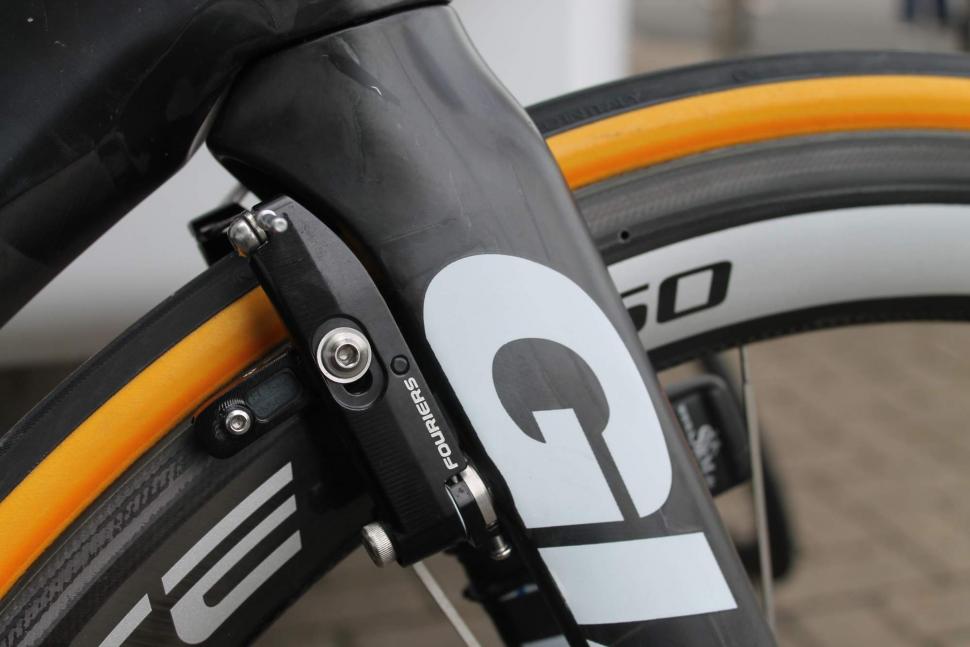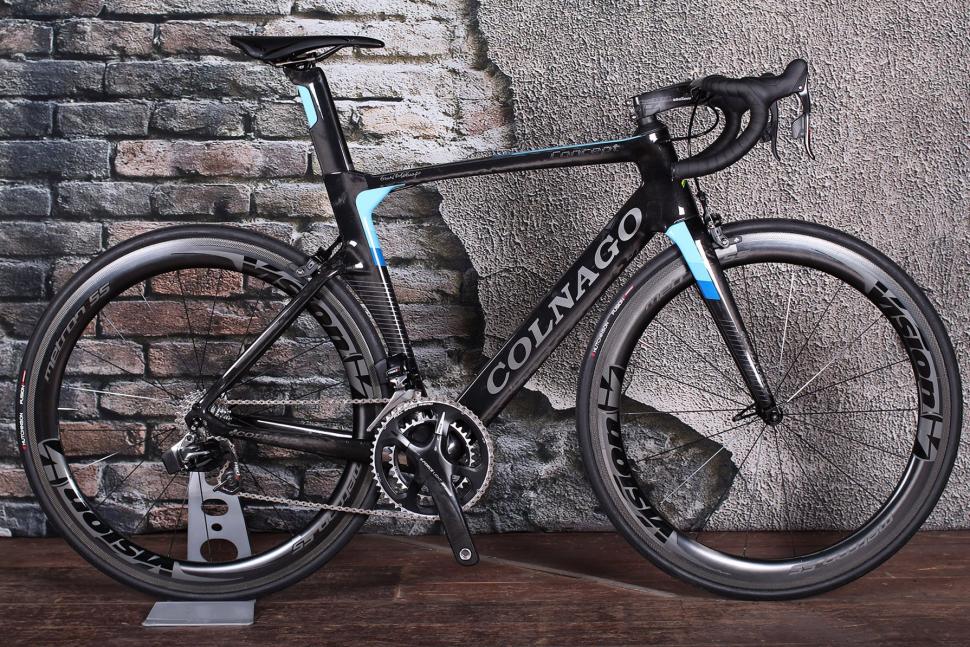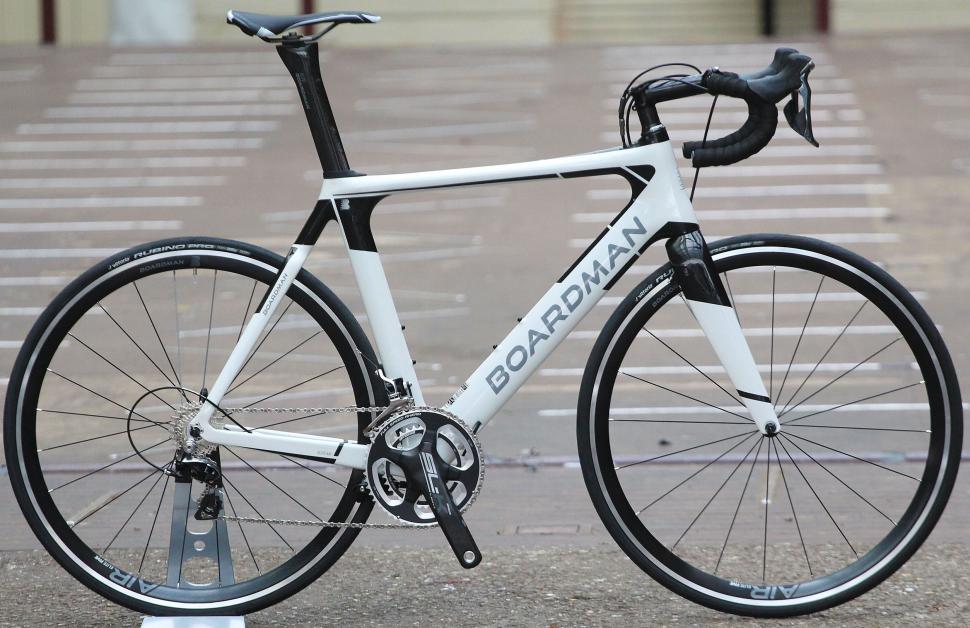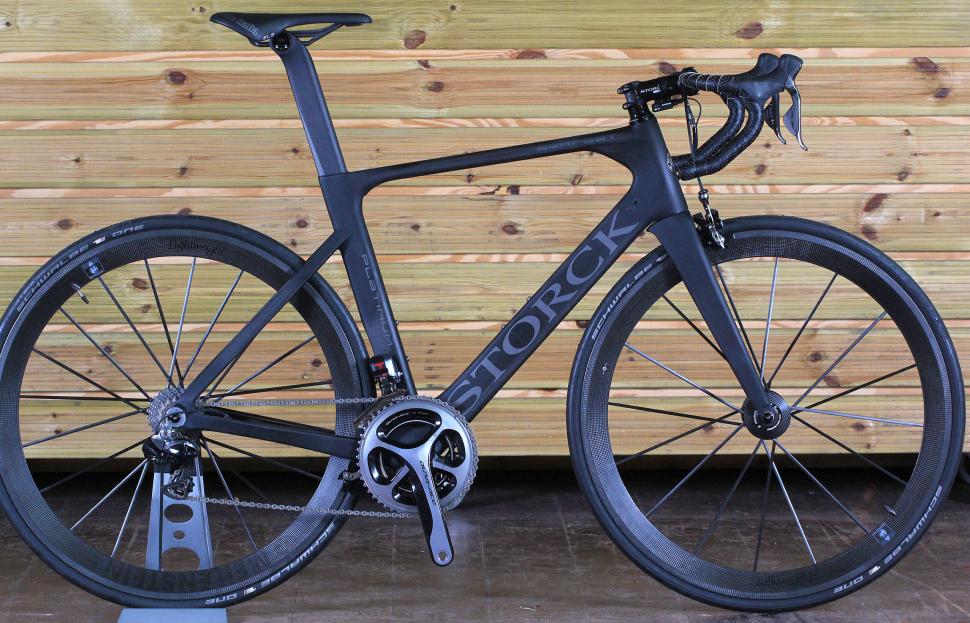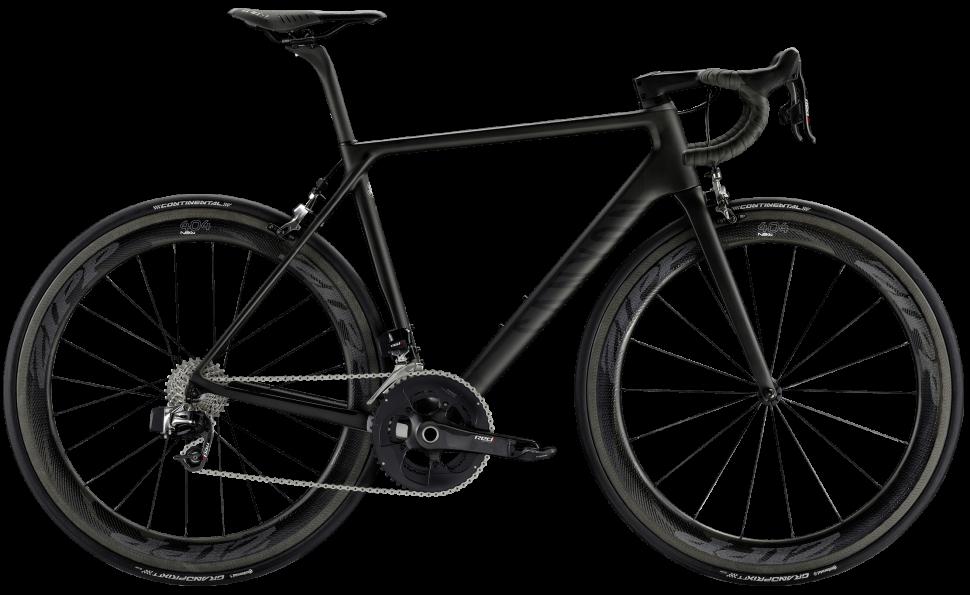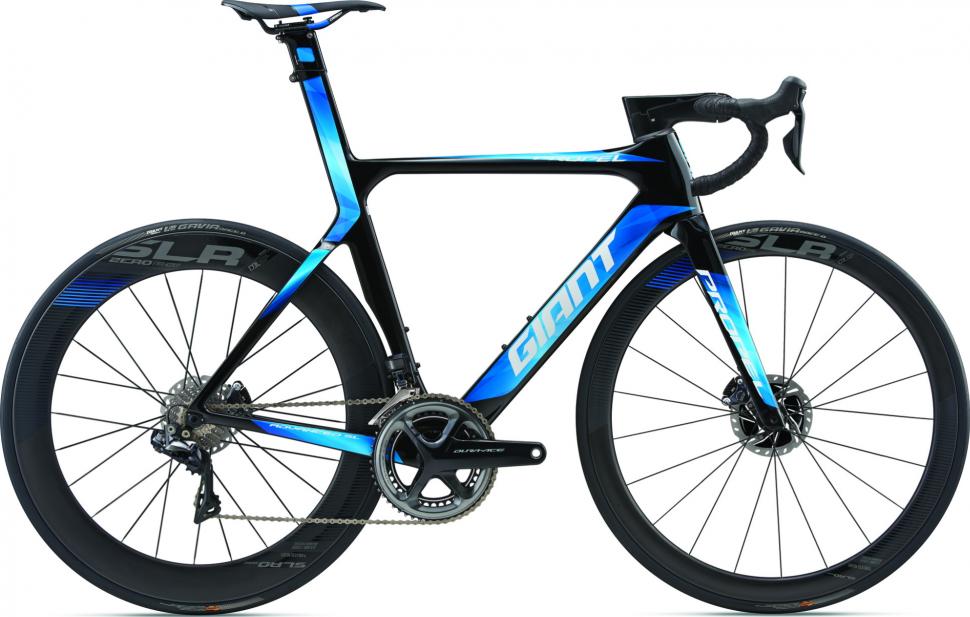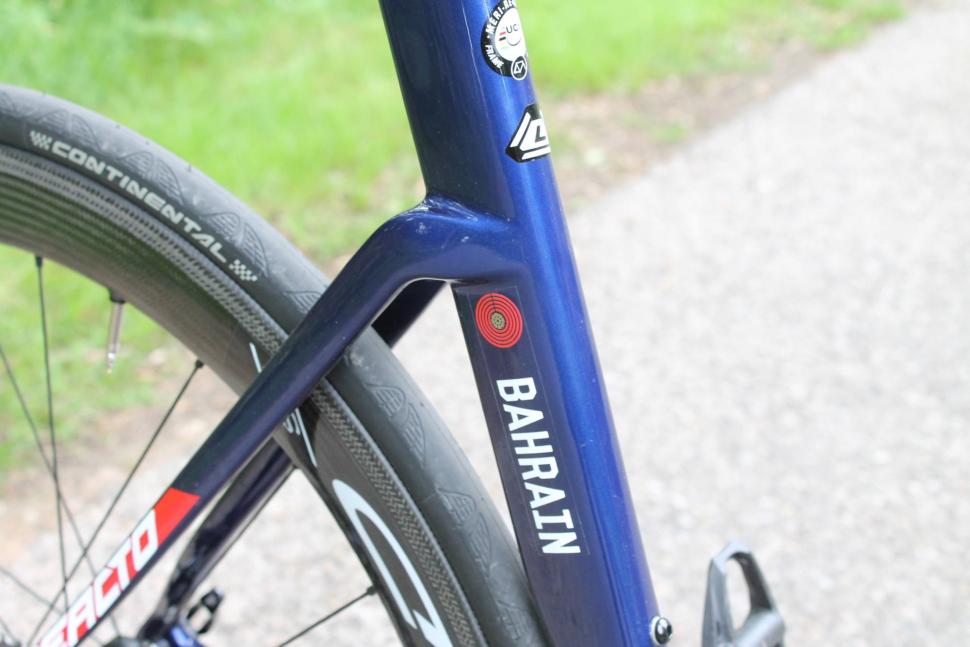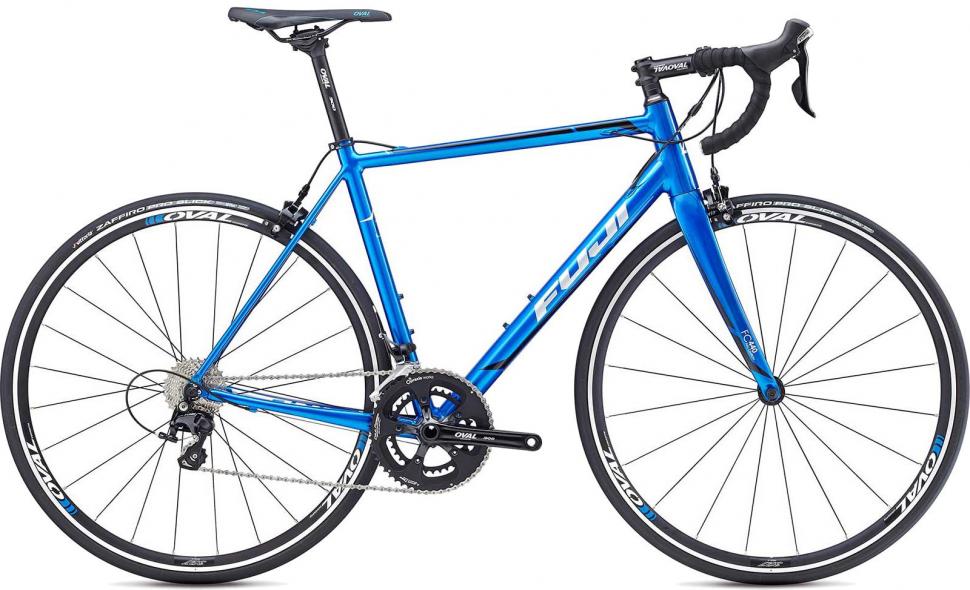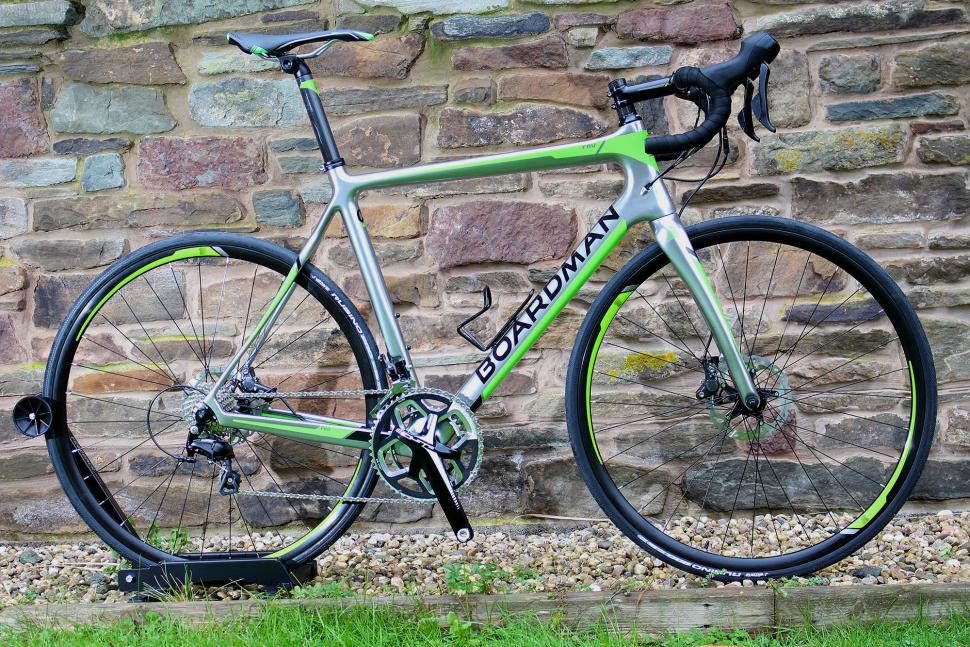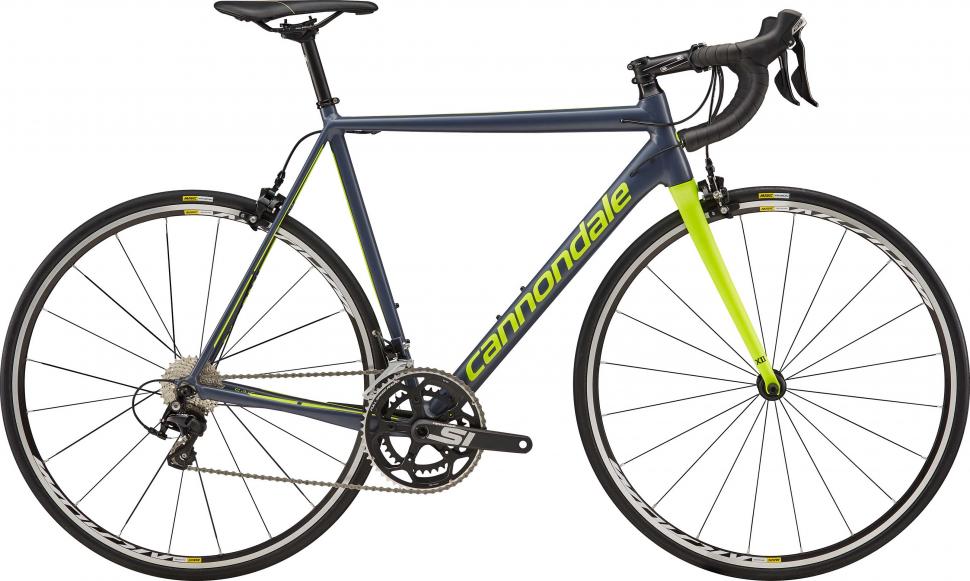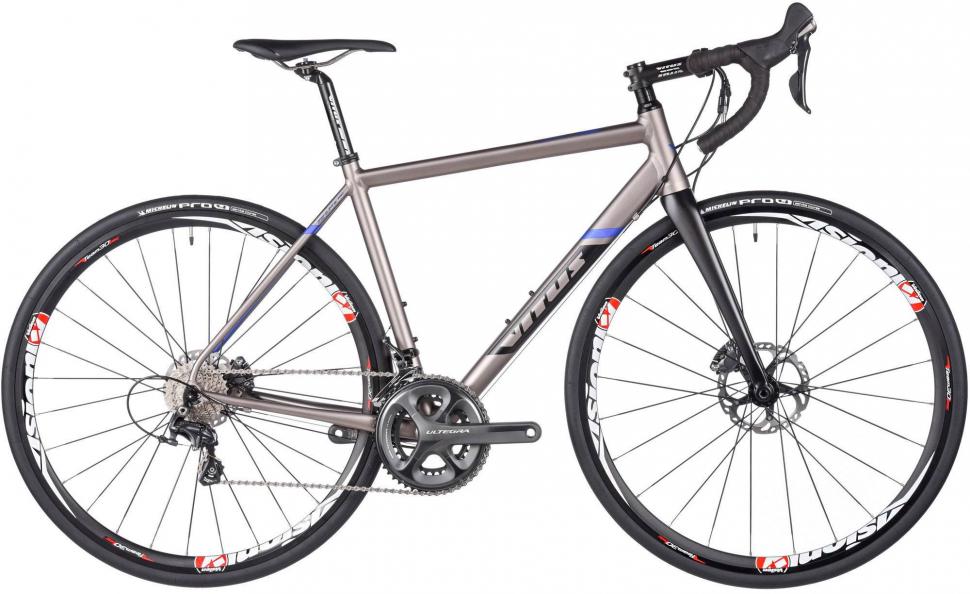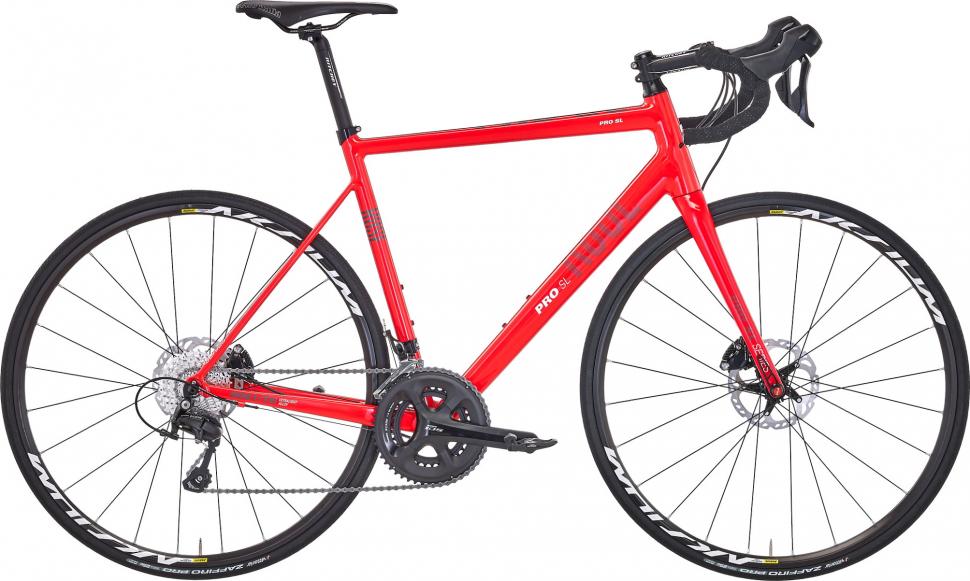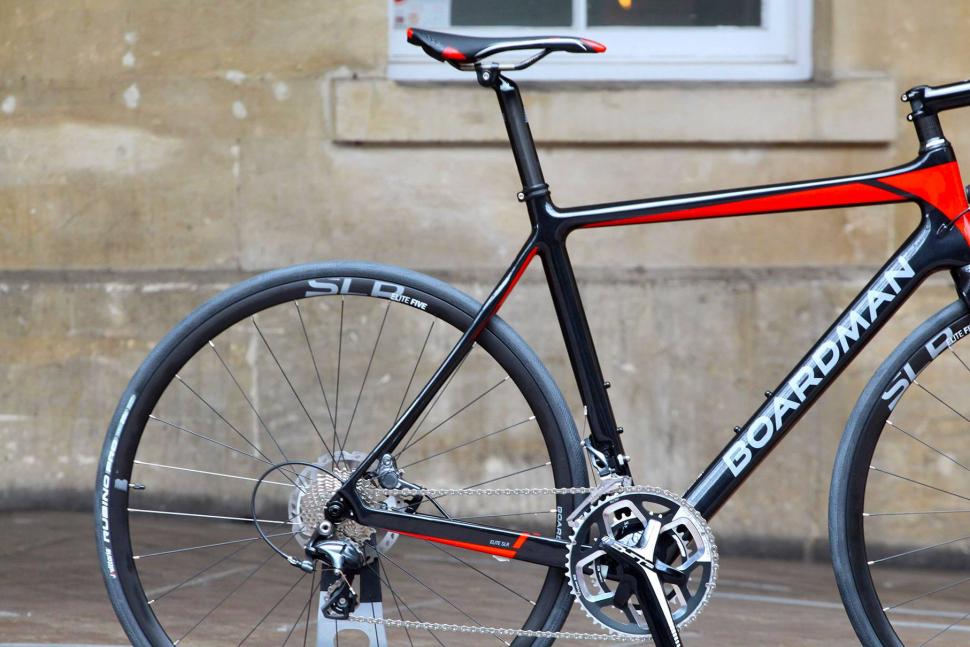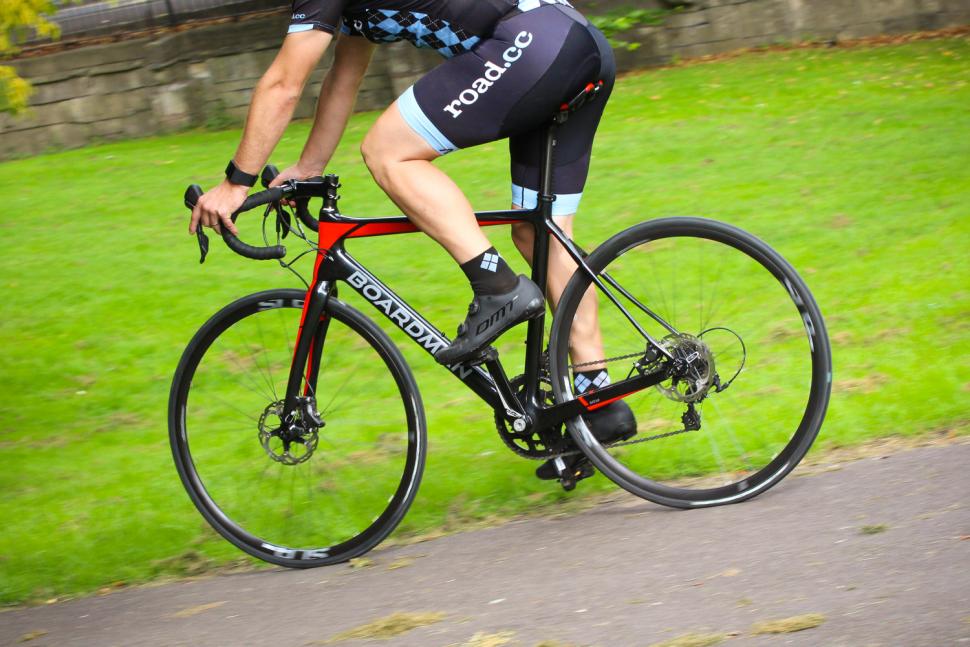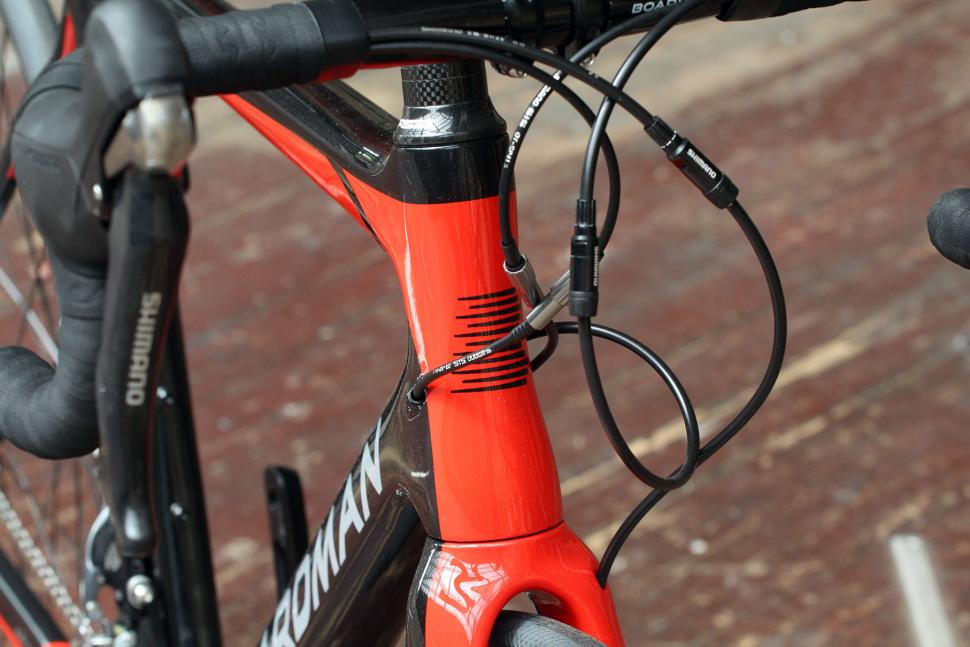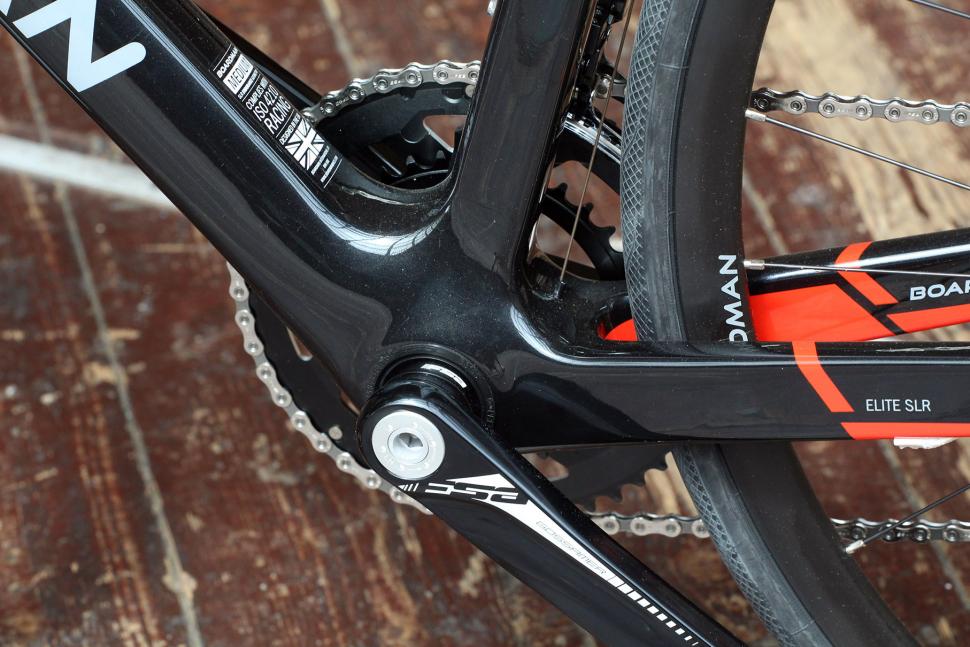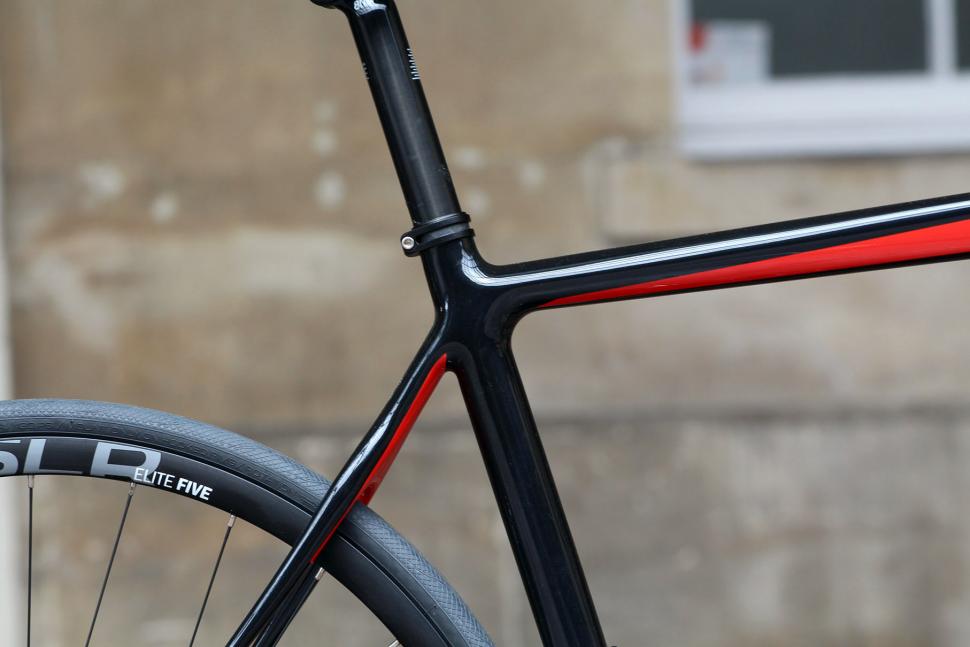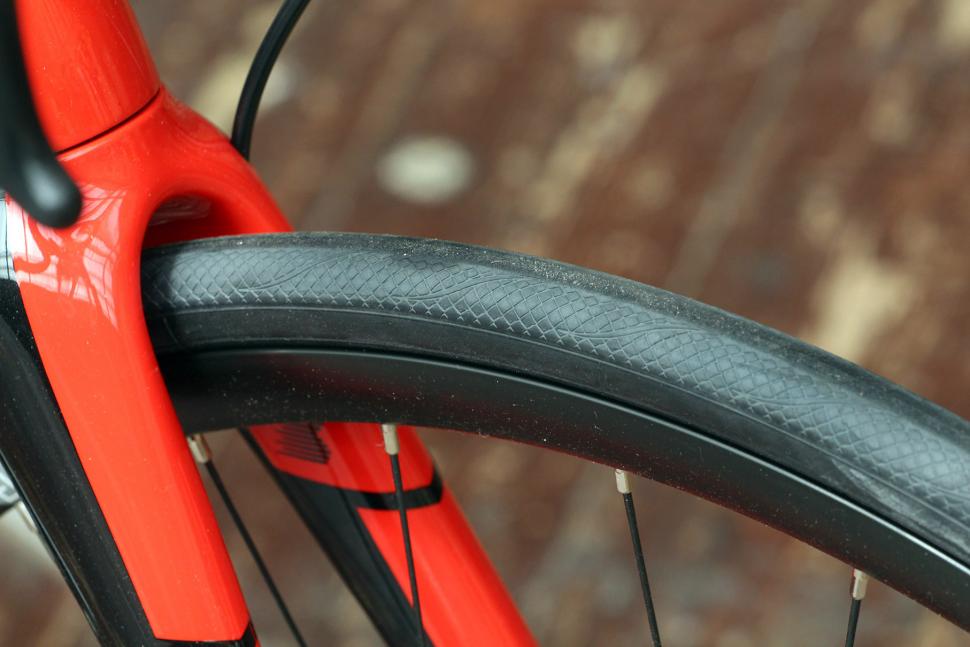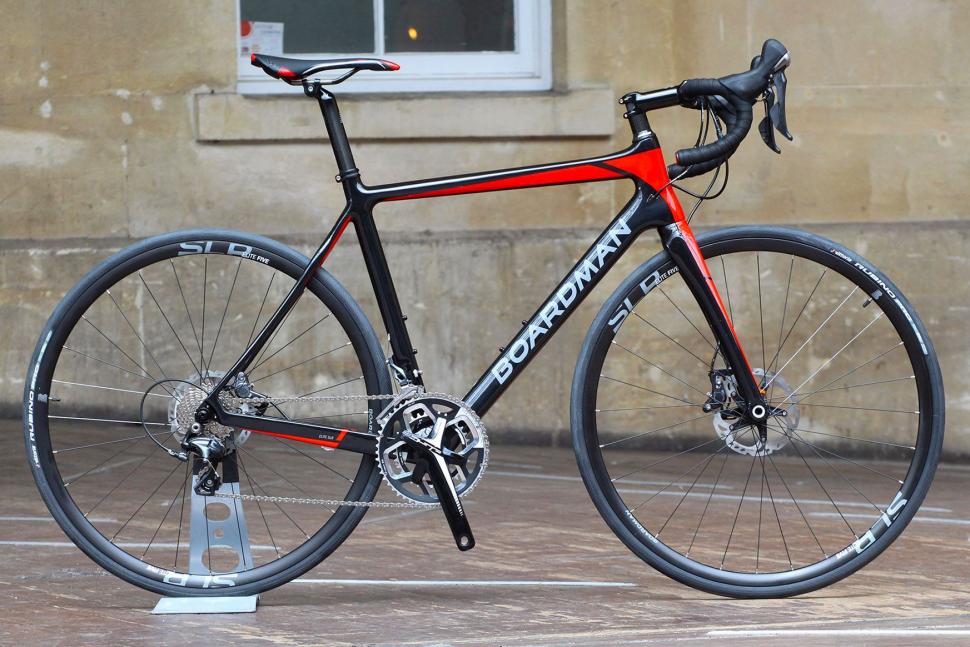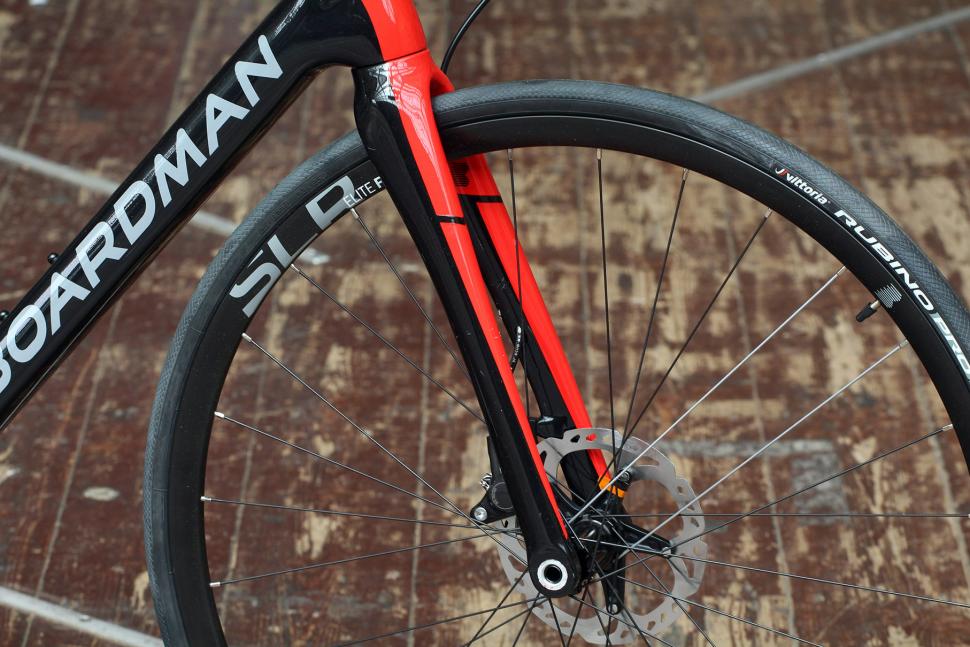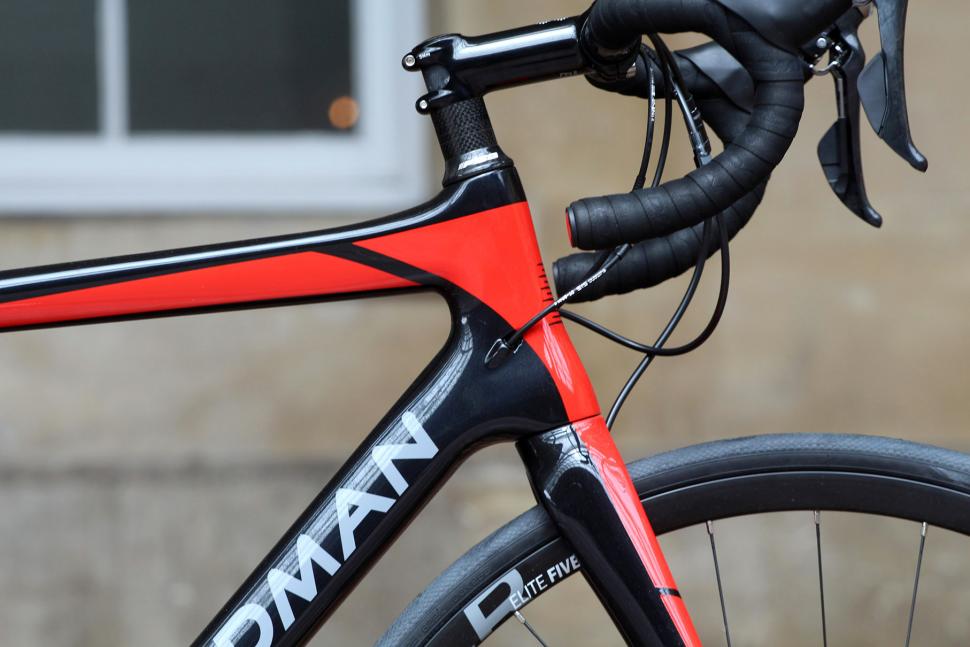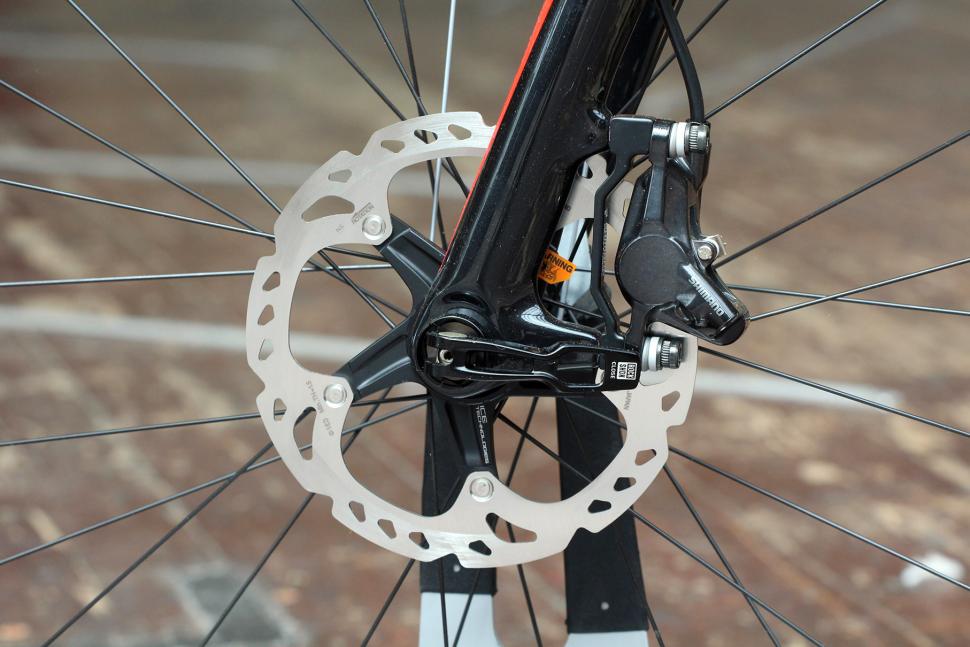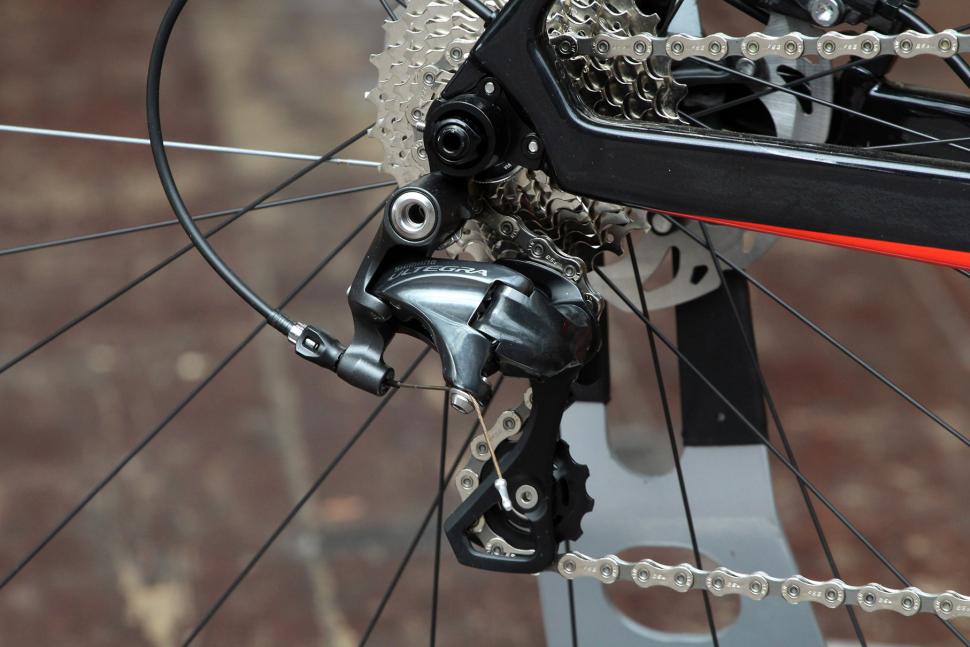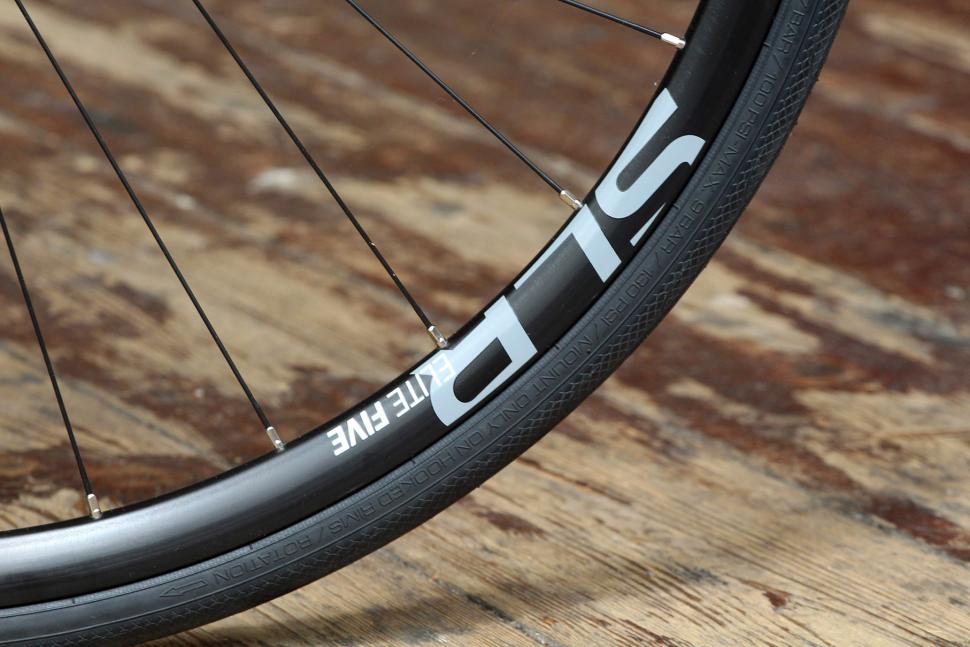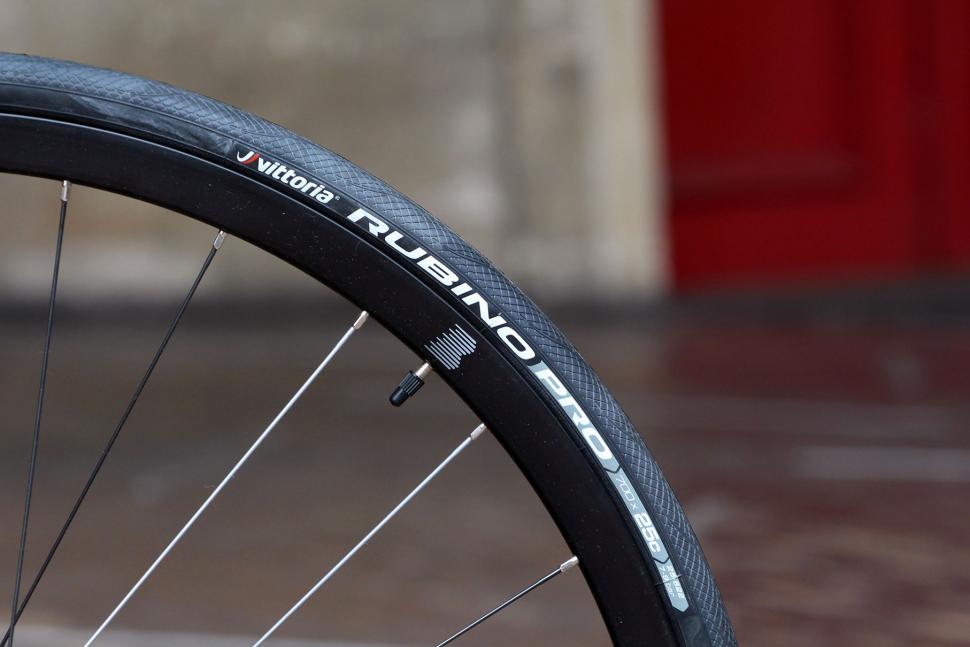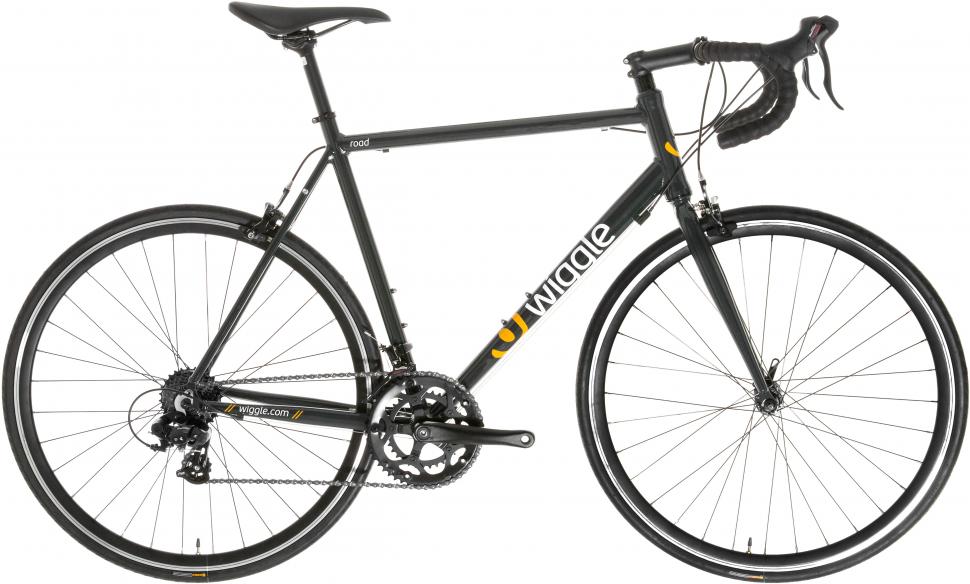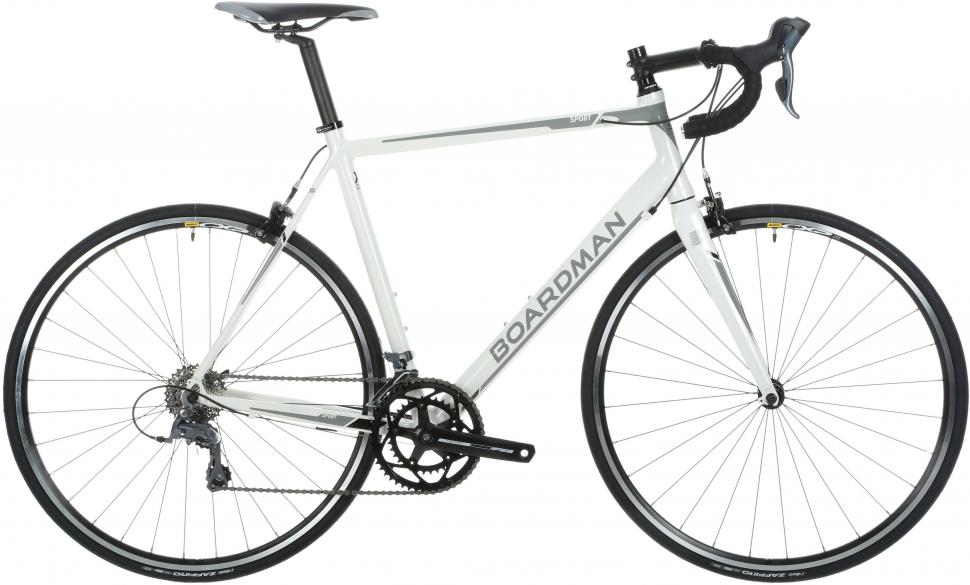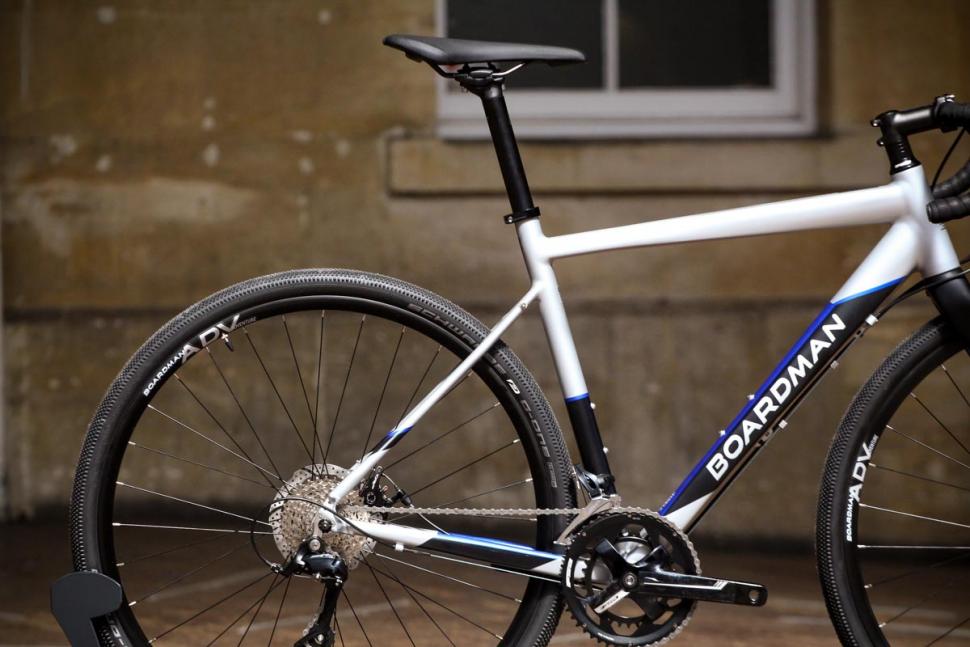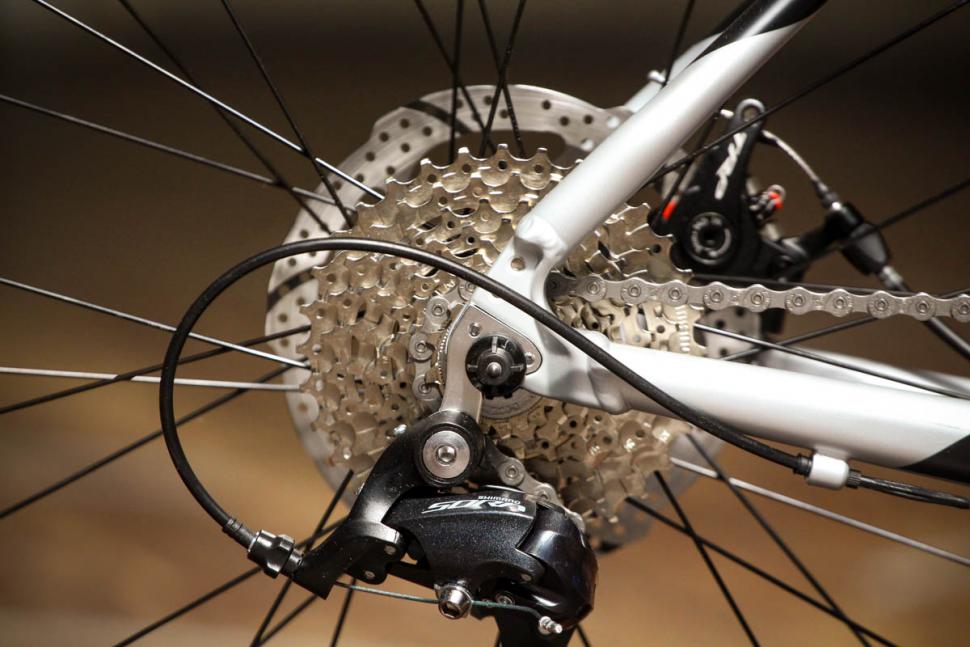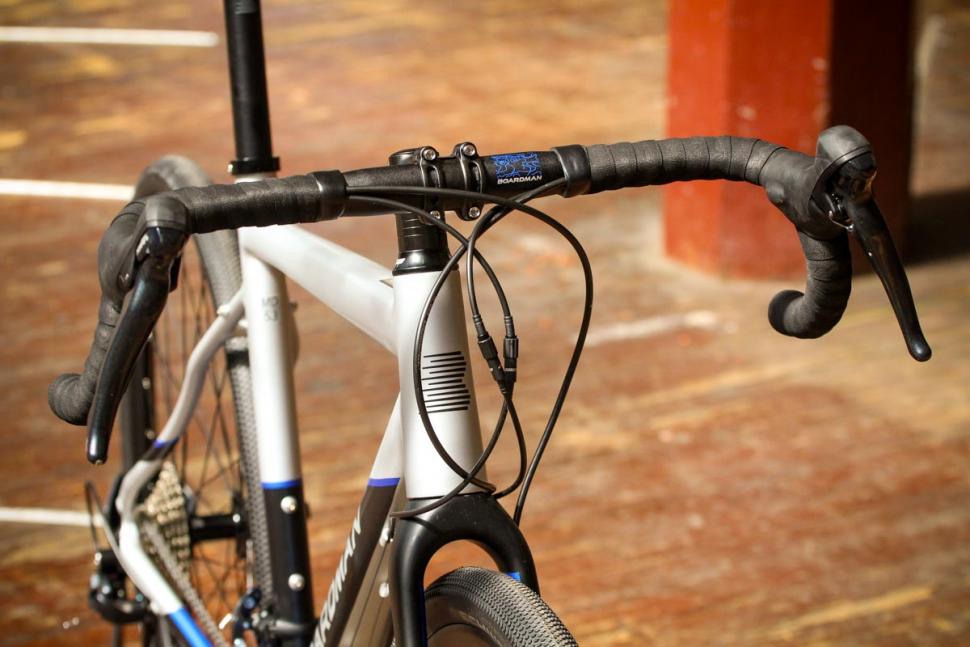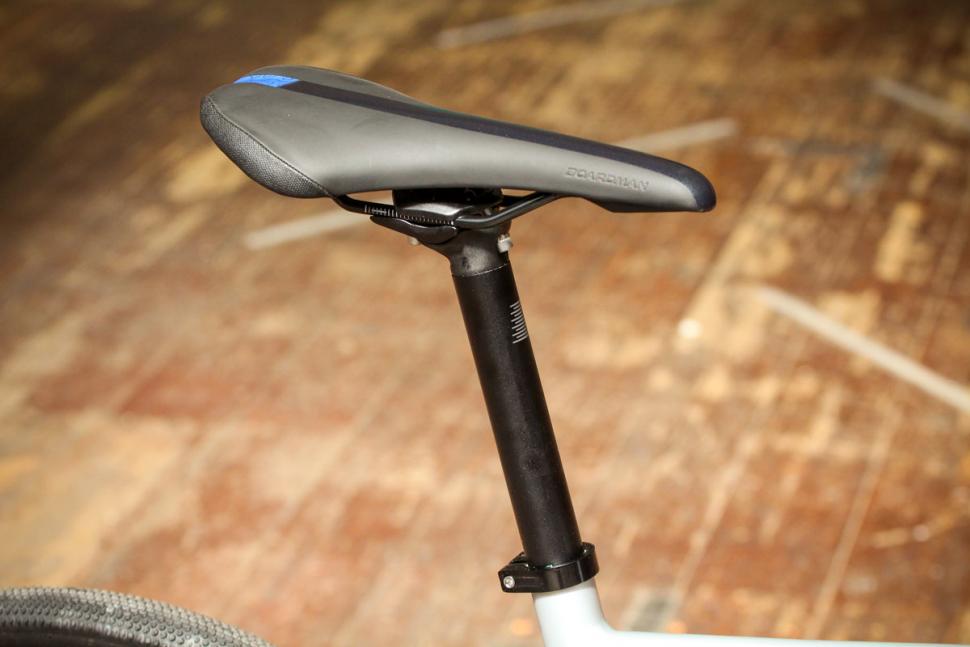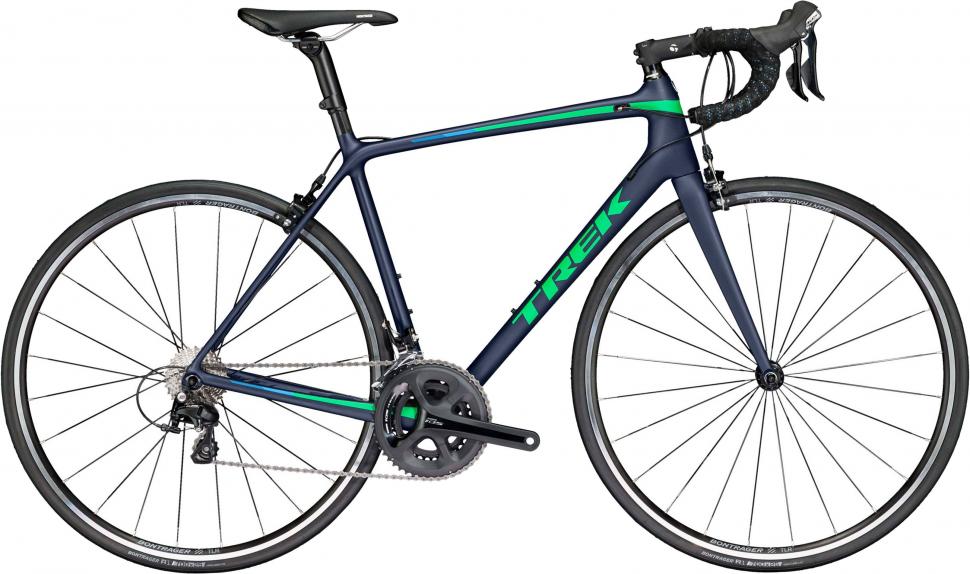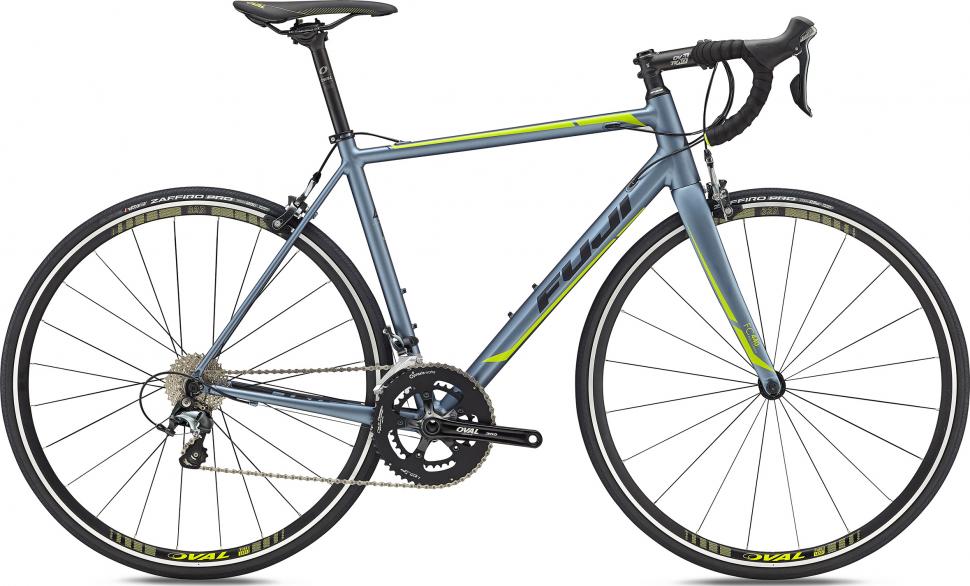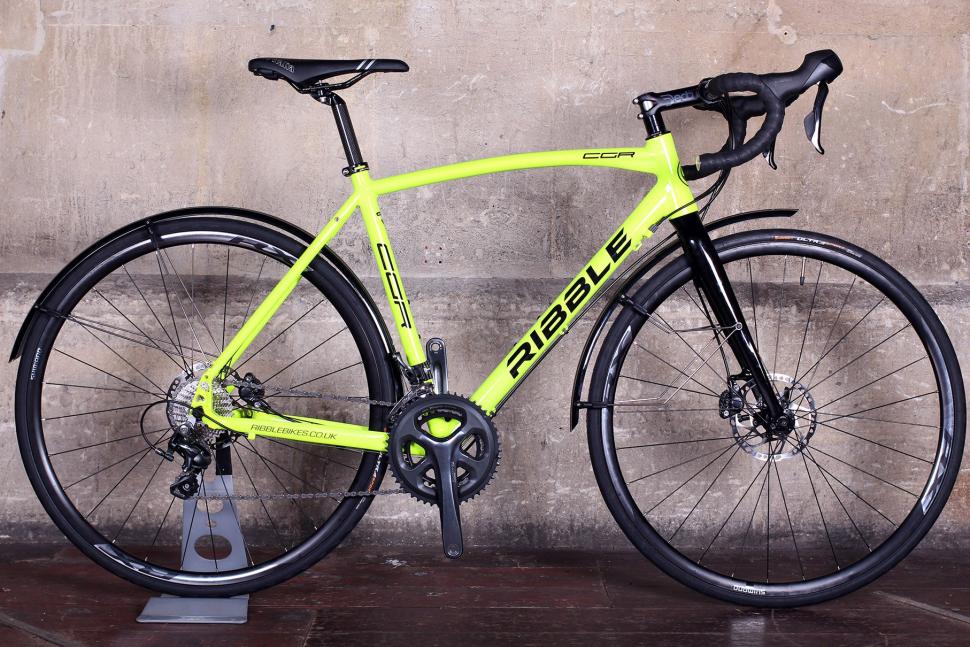With elongated tube shapes and other wind-cheating features, aero road bikes provide a small but handy speed boost.
Sleek shapes make for a distinctive look.
Recent aero road bikes have alleviated the harsh ride that plagued some early models, thanks to improved use of materials.
Frame aerodynamics is still a marginal gain; if you're wearing flappy clothes an aero bike is a waste of money.
In just a few years aero road bikes have gone from The Next Big Thing to a mainstream bike option. The latest models have been tweaked to be faster than ever, according to the manufacturers, and to alleviate the harsh ride that characterised some early aero bikes.
Aero road bikes essentially draw the aerodynamic features from time trial bikes into a road frame, and balance the demands of weight and stiffness into a package that, on paper, looks to be the ideal all-round choice.

At any decent speed, most of your effort goes into overcoming air resistance, so reducing a bike's drag means you'll go faster, or ride at any given speed with a lower power output. Who doesn't like the sound of that?
Most of your air resistance comes from your body. Wearing non-flappy clothing will help, as will losing weight. But the 20% or so of air resistance from your bike is enough for engineers and designers to focus on making road frames and products more slippery in the air. In the pro peloton aero road bikes have been quickly adopted, where the margins of victory are very slim and there has been a focus on gaining ever smaller performance gains over the years.
Weight, and the lack thereof, used to be the main driving force of frame development. Along with stiffness, these were the two cornerstones of bike design. These days most bikes are light, many well below the UCI’s 6.8kg weight limit (which doesn’t affect non-racers anyway), and come with more stiffness than is sometimes comfortable.
All that has made aerodynamics more important for manufacturers. Specialized has built its own wind tunnel, for example, and most manufacturers are testing in wind tunnels. Nevertheless, aero road bikes haven't converged on a perfect, slippery common shape. Different engineers prioritise different ways of improving aerodynamics but there are shared design trends: skinny, aerofoil-shaped tubes, integrated brakes, and internal cable routing.
Let's take a look at the latest aero offerings.
Colnago Concept — £3,150 (frameset)
Colnago has joined the aerodynamic arms race with the brand new Concept, a full blooded aero race bike that is a serious step forward from the Italian company's first aero road bike, the V1-r, from a couple of years ago.
The Concept has all the capability to dice with the fastest in a race situation. The Concept's stiff frame, Vision deep-section wheels and 7.2kg weight give it an insatiable appetite for speed. It's quick in all circumstances: climbs, descents, flat and undulating roads – everywhere, the bike really shines. It's an exciting bike to ride fast, and like all good aero road bikes encourages you to ride flat-out.
That firm ride, and frame and fork stiffness ensure the Concept accurately follows your inputs, whether through the handlebar or pedals. It reacts very positively to your body language, whether you're blasting up an uphill sprint finish or bombing through a curving descent.
But all-out speed isn't all the Concept is about, and it's not just a bike for racing. The Concept provides adequate composure and comfort, allowing you to tackle long distance rides at a few notches below race pace and not be dealt a hammer-blow to the lower back the moment the tyres encounter anything but a billiard-smooth surface. The front end of aero race bikes can often be overwhelmingly harsh, but the special headset and fork steerer tube that Colnago has developed mean it's smoother up front than would normally be expected on an aero road bike.
Read our review of the Colnago Concept
Find a Colnago dealer
Rose X-Lite CWX Disc — from £3,770
The Rose X-Lite CWX-4100 is a quick, fast-handling aero road bike with disc brakes, and although £4,700 is clearly a lot to spend, it represents good value. You really are getting a lot for your money here.
The CWX-4100 – the name sounds to us like it should belong to some sort of droid – is at its best when you're hammering. The aggressive riding position and the frame's aero features announce loud and clear that this bike is intended to be ridden fast.
Weighing in at just 7.46kg (16.4lb) – light for something with deep, aero-optimised tubes and disc brakes – and with loads of stiffness through the central section of the T40/T60 carbon-fibre frame, it feels every inch a race bike whether you're tearing along flat roads or scampering up the climbs.
Read our review of the Rose X-Lite CWX-4100 Di2 Disc
Merida Scultura 6000 2018 — £2,400
The Merida Scultura 6000 just feels right when you get on it. The position, the ride, the comfort… it's one of those bikes that gives you the confidence to push it as hard as you want, knowing that it isn't going to bite back. It's a bit of a bargain too when you consider the frame is being ridden in the pro peloton and weighs a claimed 750g. It's a hell of a lot of bike for the money.
For this revised version of the Scultura frameset Merida has concentrated on increasing comfort, and it's obviously paid off. The frame is handmade in Taiwan, and by tweaking the carbon layup in certain areas it has been able to bring in quite a bit of extra damping without sacrificing stiffness.
Aerodynamics was another target for Merida, using computational fluid dynamics in the design process and wind tunnel testing of various incarnations. It even used a dummy with moving legs to replicate the effect the rider's pedalling has on wind resistance.
Read our review of the Merida Scultura 6000
Find a Merida dealer
Boardman Elite Air — from £1,899.99
Boardman's Elite Air 9.2 is just the ticket if you're looking for a fast bike with a good spec but you haven't got very silly money. It's a good package and the performance is impressive straight out of the box.
If you're buying an aero bike, chances are you're doing so because you want to go faster; that, or you just like the look of deep-section tubes.
Do you go faster? The anecdotal evidence suggests a yes: you go faster on this than on standard road bike. Our tester grabbed a downhill KOM on Strava, hung on longer before getting blown out the back of a crit with riders a grade above him and added 10km/h to his top speed on a favourite descent.crit with riders a grade above him and added 10km/h to his top speed on a favourite descent.
Read our review of the Boardman Elite Air 9.2
Find a Boardman dealer
Storck Aerfast Platinum — £10,949
At £10,949, the Storck Aerfast Platinum is a massive outlay, but boy, oh boy do you get one hell of a return on your investment. It's a sub-6.5kg race weapon, with aerodynamics that work in the real world, and it offers comfort levels to challenge most endurance bikes.
Taking plenty of things it's learnt from its astonishingly good Aernario, Storck has pushed the design even further down the aerodynamics route, and what it has created in the Aerfast is a bike that's not only unbelievably fast, but light and stiff too.
If you're in the market for an aero bike, speed is going to be topping your list of priorities, and it's where the Aerfast truly excels. Below about 23mph the Storck feels like any other bike to ride, any other superlight bike that is, but all the same it feels like it requires some effort; you've got to work at it.
Get above that speed, though, and the aerodynamics really come into play. It feels like a permanent tailwind is nudging you along, a friendly hand on your back as you watch the numbers climb on the Garmin – with no more effort required than there was 5mph ago. It's a wonderful feeling, and one you never tire of.
Read our review of the Storck Aerfast Platinum
Cervelo S5 — £6,499
Long hailed as the fastest aero road bike by people who know a lot about aerodynamics, the Cervelo S5 received quite a makeover for the 2017 model year. It still looks like an S5 but Cervelo claims to have finessed every tube profile and found significant drag reductions. It’s also increased frame stiffness in the head tube and bottom bracket to improve handling. Another change is the shorter head tube to put the rider in a lower, and more aerodynamic, position. Cervelo has also developed its own aero handlebar which is compatible with a regular stem.
Read our coverage of the Cervelo S5 launch
Find a Cervelo dealer
Ridley Noah SL — €7,249.95
Aero and discs? It's getting more and more common as bike makers figure out how to mount disc calipers without affecting aerodynamics too much.
Ridley calls its collection of speed-enhancing aerodynamic features FAST. It includes the slotted F-Split fork and F-Surface Plus, a tube shape that combines an aerofoil with a groove that helps keep the air flowing smoothly over the fork, reducing drag.
As for the discs, Ridley believes they're simply a better way of stopping.
Read about Greg Henderson's Ridley Noah SL
Find a Ridley dealer
Pinarello Dogma F10 — £4,499 (frame, fork)
Developed in collaboration with Team Sky, the Dogma F10 follows on from the highly-acclaimed F8, on which Chris Froome won the Tour de france. The F10uses FlatBack tube profiles, a Kamm Tail sort of shape, with a rounded leading edge and chopped tail. Pinarello has also lowered the seat tube water bottle cage and it’s further shielded by the down tube. Meanwhile, up front the fork has been derived from the company’s Bollide time trial bike with an aerodynamic shape, and the crown closely nestles into a recess in the down tube.
Canyon Aeroad CF SLX — from £3,199
The second-generation Aeroad CF SLX has been inspired by the work on its futuristic Speedmax time trial bike, with razor sharp aero tube profiles and an optional one-piece handlebar and stem assembly. Much of the company’s focus with the new bike has been in reducing the frontal surface area, so along with the new handlebar there’s a narrower and hour-glass shaped head tube to help reduce drag. Other changes include the new tube profile, a variant of the Trident shape used on the Speedmax, and a seat tube that hugs the curvature of the rear wheel. Unlike some aero road bikes that integrate the brake callipers, Canyon has opted for direct-mount Shimano brakes in the regular positions.
Read our review of the Canyon Aeroad CF SLX 7.0 Di2
Read our review of the Canyon Aeroad CF SLX Disc 8.0 Di2
Specialized S-Works Venge Disc Vias eTap — £8,500
If you're going to fly, you need to be able to rein in that speed. Disc brakes give finer modulation of speed with less effort at the lever so as you're whooping into Alpine hairpins you can brake later and waste less valuable speed.
The Venge had a radical makeover last year, with an all-new aero frame, and an aero handlebar and stem with full internal cable routing. The almost complete lack of cables flapping in the wind, further reduces drag.
Read our review of the Specialized Venge Vias Expert Disc
Read about Mark Cavendish's Venge at the Tour de France
Find a Specialized dealer
Scott Foil — from £2,499
The Foil arguably kicked off the whole aero road bike trend, bringing aerodynamic design that was once the preserve of time trial bikes to regular road bikes. For 2018, Scott has added disc brakes, arguing along with other manufacturers that you can go faster if you can slow down better.
That's on top of the last series of updates to the Foil that saw the down tube lowered and wrapped around the fork crown, and a smaller rear triangle and internal seat clamp in the top tube.
And don't think this is just a uncomfortable aero bike, Mathew Hayman rode over a few little bumps on his way to winning Paris-Roubaix.
Read our coverage of the 2016 Scott Foil launch
Find a Scott dealer
Trek Madone — from £3,500
Once an all-round lightweight race bike, the Madone has had a complete aerodynamic makeover. It features a version of the Isospeed decoupler borrowed from the Domane to provide some comfort (aero road bikes have traditionally compromised comfort in the quest for speed) and it’s wrapped up in a frame with Kamm Tail shaped tubes. Like Specialized, Trek has also developed its own brake callipers, and they’re concealed within the fork and seat stays. To keep the cable routing of the centre pull front brake nice and clean, the head tube features flaps that open and close when the fork is turned.
For 2018, prices are down out of the upper stratosphere with a new model, the Madone 9.0, above, that's a bargain at a mere £3,500.
Read our coverage of the 2016 Trek Madone launch
Find a Trek dealer
Merida Reacto — from £1,000
Merida’s Reacto features tube profiles shape in accordance with NACA airfoil principles, and using the popular Kamm tail approach of chopping off the trailing edge, tricking the air into acting as if the trailing edge were there. More than any other bike here, the Reacto looks like a time trail bike in drag. There’s an aero seat post, internal cable routing and the rear brake is positioned underneath the chain stays. The front brake, meanwhile, is found on the front of the fork.
Read our review of the Merida Reacto 300
Find a Merida dealer
Canyon Ultimate CF SLX — from £2,649
Canyon has given its latest Ultimate CF SLX a light touch of aerodynamic influence. It has developed a new D-shaped down tube, seat tube and seatpost, which along with a new internal seat clamp, adds up to a claimed 10% reduction in drag compared to the previous non-aero Ultimate. It doesn’t challenge Canyon’s Aeroad CF SLX for outright slipperiness in the wind tunnel, but does point to a future where all road bikes might one day be shaped in the wind tunnel.
Giant Propel Advanced SL 0 Disc 2018 — £8,998.99
Giant has added disc brakes to the Propel Advanced lineup for 2018, claiming that the flagship model, the Propel Advanced SL Disc, has the highest stiffness-to-weight ratio of any bike in its class and a lower drag coefficient at a wider range of yaw angles than the rim brake version.
“One of the key breakthroughs is a new truncated ellipse airfoil shape – a design that lowers drag at a wider range of wind angles than traditional teardrop frame tubing,” says Giant. “Engineers also found that, with proper integration, a disc-brake design can actually improve aero performance compared to rim-brake configurations.”
As well as a stunning paint job, the top of the range Propel Advanced SL 0 Disc has a full Shimano Dura-Ace Di2 groupset and Giant's own SLR 0 Aero Disc wheels with a 42mm deep front rim and 65mm rear.
If you're not loaded, the Propel disc range starts at £2,999 with the Propel Advanced Disc.
Read our review of the Giant Propel Advanced 1
Read our coverage of the original Giant Propel launch
Find a Giant dealer
